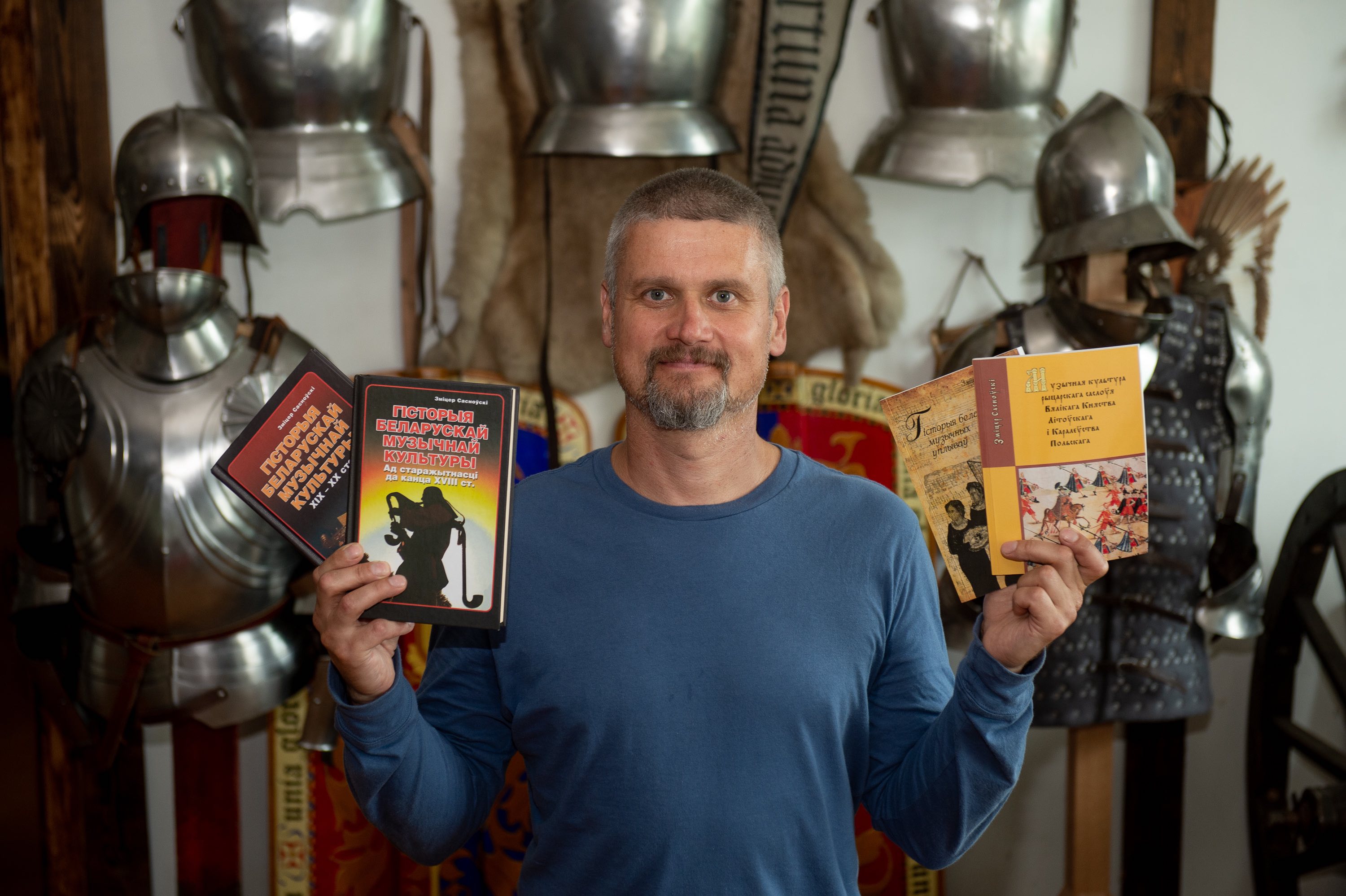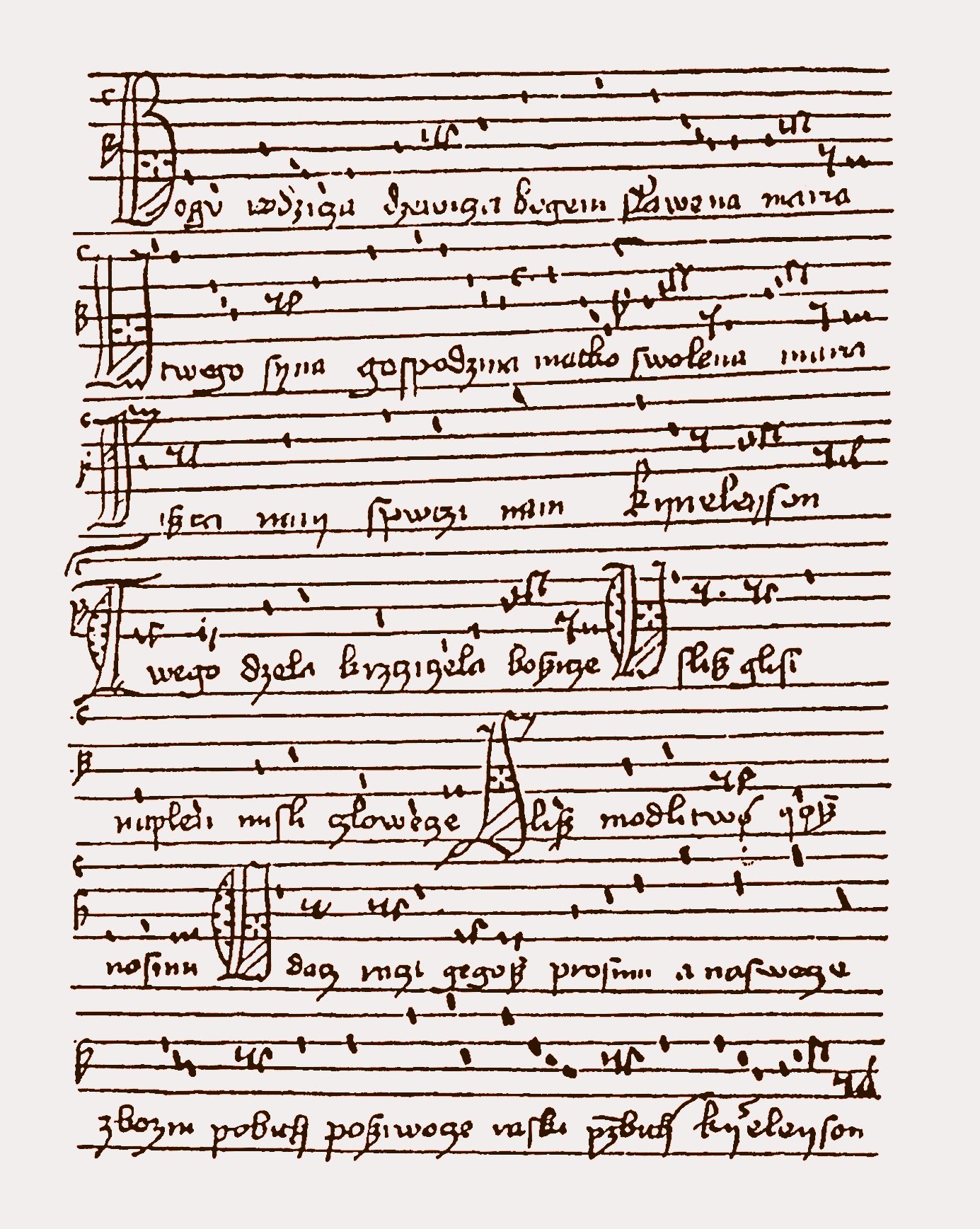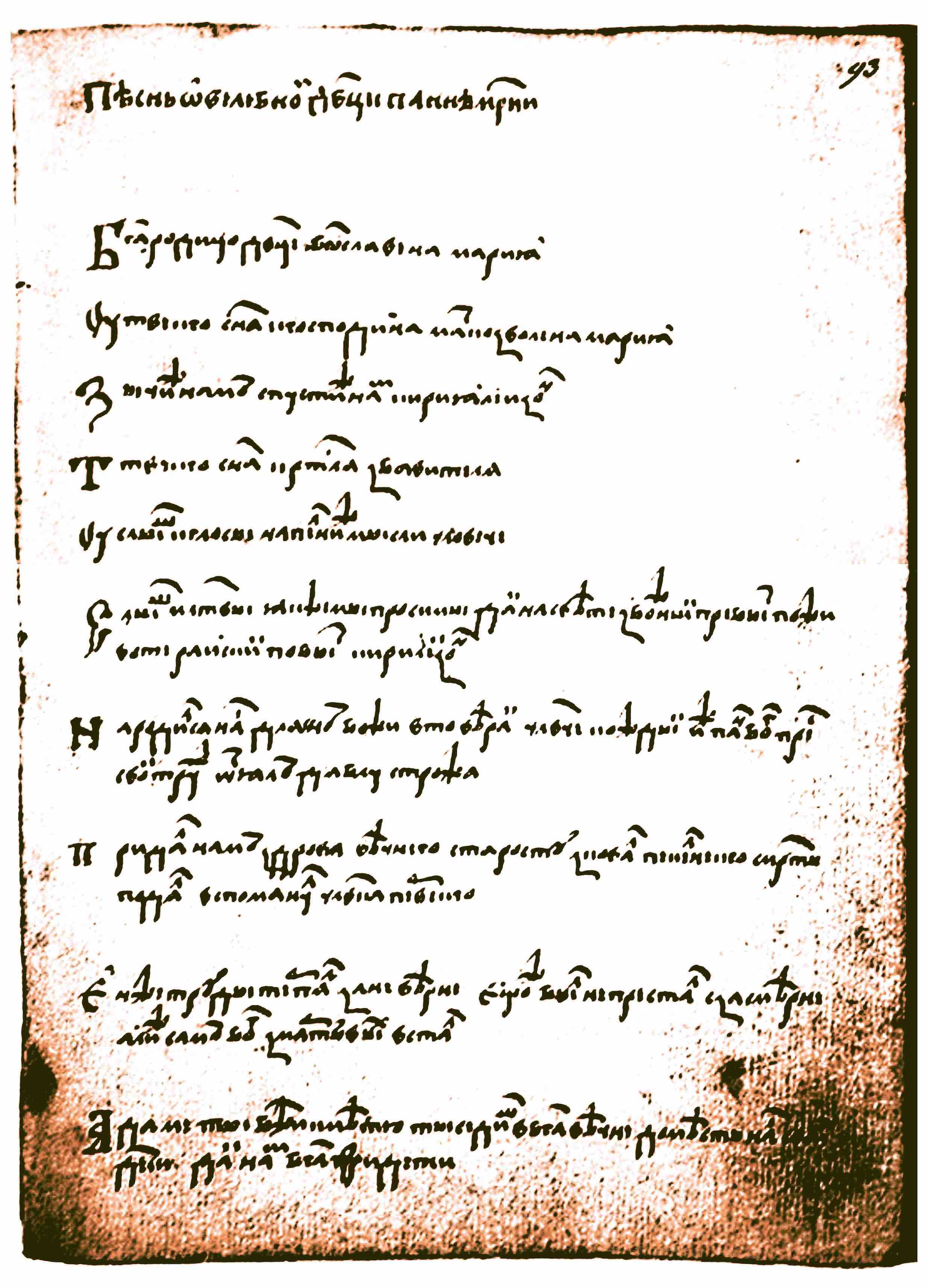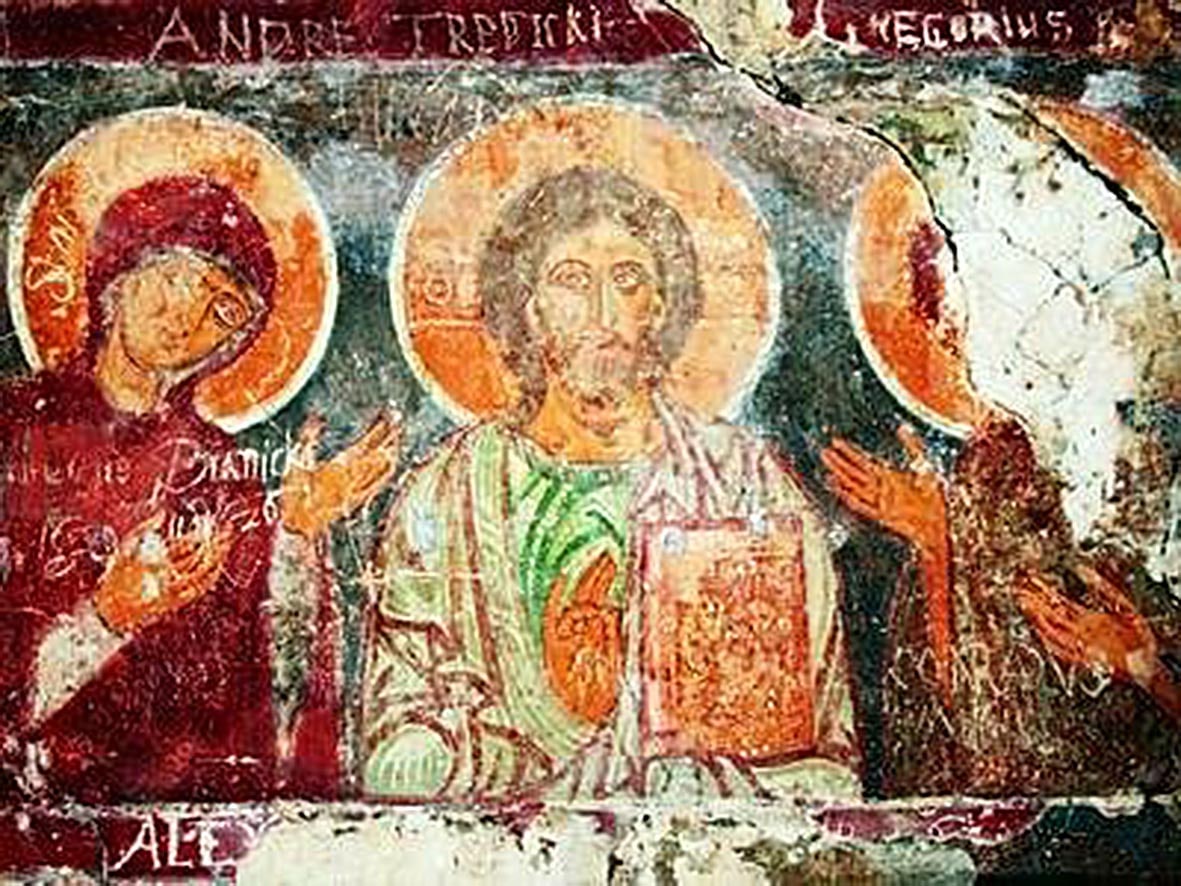Zmitser Sasnouski is a historian, the founder and musician of the band Stary Olsa. He is an author of books: «Гісторыя беларускіх музычных уплываў» (2009), «Музычная культура рыцарскага саслоўя ВКЛ і Каралеўства Польскага» (2010), «Гісторыя беларускай музычнай культуры» in 2 volumes (2010, 2012).

What is the main problem of this hymn?
Thanks to Jan Długosz (the author of Annales seu Cronicae incliti Regni Poloniae) we know that The Virgin was sung by the entire Polish-Lithuanian army before the Battle of Grunwald in 1410. This hymn was also sung before other battles as a battle song and folk hymn (Patrium carmen - song of the Fatherland). But! We have a version, the full melody of which in the Middle Ages could be performed only by professional musicians and only after rehearsals. You can listen to it here.
A knight, a citizen and a peasant, unfamiliar with the iconic vocal art, could not sing such a complex work in a choir. The clue to this may be the version that existed in a simpler and more ancient version.

So why make the hymn so complicated?
The melody was made complicated for a particular reason, so that the singing of the hymn became the monopoly of the clergy, to prevent the heretical joint performance of the hymn in the style of Hussite chorales, as it was before the Battle of Grunwald (1410).
Is the Virgin Mary an Orthodox or Catholic hymn?
The hymn Virgin Mary is considered a Polish Catholic hymn, which was sung before the battles, at the coronations of Polish kings and celebrations in Poland. But only the Belarusian version of the Virgin Mary is stylistically unique throughout the text. Moreover, the Virgin Mary does not agree with the Catholic doctrine. The hymn The Virgin has a strong connection with Byzantine traditions, contains many analogies with the Orthodox literature of the Grand Duchy of Lithuania (GDL).

Who is the author of the hymn’s lyrics?
R. Mazurkiewicz came up with the conclusion that the Polish author could not have written the text of this hymn, as the Polish literature at the time was at a much lower level. J. Woronczak, E. Ostrowska, H. Feicht also noted that the poetic nature of the Virgin Mary far exceeds the level of contemporary Polish poetry. The two oldest columns of the song include words and grammatical forms that are nowhere to be found in the Polish literature at that time or later. At the same time, the words of the older columns of the hymn, which Polish researchers call unique or archaic, are naturally interpreted from the Church Slavonic and Old Belarusian languages.
Could the literary part of the hymn be written by one of the Orthodox preachers?
Special analogies of the theological content of the Virgin Mary arise when comparing it with the work of Cyril of Turau. R. Mazurkiewicz especially noted the similarity in the ideas of the intercession of Mary and John the Baptist in the hymn Virgin Mary with identical motives in the Sermons of Cyril of Turau. Cyril of Turau was the greatest poet of Eastern Europe in the second half of the twelfth century. But the most important thing is that Cyril of Turau was a brilliant poet-hymnographer, and for that reason he was called The second John Chrysostom by his contemporaries. Vocabulary similar to the hymn the Virgin Mary can be found in such works of Cyril of Turau as Sermon on Palm Sunday, Sermon on the Cathedral, Sermon on Anti-Easter and others.

What does the hymn Virgin Mary have to do with the old Belarusian culture?
In the work The Passion of the Christ in translated old Belarusian literature at the end of the 15th century the Mother Mary's weeping is clearly similar to to the Belarusian folk lamentations, namely with the mother's lament over her son's grave. This leads to the idea of deep connections between the ancient art of lamentation and the motives laid down in the hymn Virgin Mary. In addition, there is a pattern in the traditional Belarusian worship of female deities and the veneration of the Virgin. The following sequence can be built: stone women's flocks → sacred Mary's Mountains → legends about women warriors → folk spells and appeals to the Mother of God → Life of St. Euphrosyne of Polotsk → popularity of icons of the Virgin → Virgin Mary on the flags of the GDL army → hymn ”.
Is it possible to hypothesize the stages of creation of this hymn?
1. In the 12th century a great prayer in honor of Mary was created in the Church Slavonic language, and was most probably written by Cyril of Turau. This prayer in its most original form was already suitable for medieval melodic recitation;
2. In the 13th century an unknown author of Praises in honor of St. Euphrosyne of Polotsk, and in the 14th century Metropolitan Gregory Tsamblak created rhyming versions of the prayer that could be performed to hymn melodies. At the merging of the traditional veneration of the feminine principle and the Orthodox worship of the Virgin, such an archaic proto-hymn spread and reached the highest strata of the GDL society;
3. Together with the court musicians of King Jagiełło the proto-hymn in honor of Mary came from the GDL to Krakow (the capital of Kingdom Poland). Here the court Orthodox musician, brought from the Grand Duchy of Lithuania, got familiar with the tradition of Western hymn-making. In collaboration with a Polish court musician experienced in the tradition of German and French spiritual hymns, the Orthodox Lithuanian and The Catholic Pole put The Mary's prayer on a simple and an easy-to-memorize melody, so that a large number of people unfamiliar with cult hymns could perform it together. In such a simple and a measured form, the hymn Virgin Mary quickly spread, became a spiritual symbol of the Jagiellonian dynasty and a knightly environment, resulting in the whole army’s singing it on the Grudwald field before the battle. This archaic version of the Virgin Mary was restored by the Stary Olsa band.
The full version of the article “The mystery of the hymn “Virgin Mary” read here.
Translation: Alena Martsyanava, Br. Liam O’Meara









